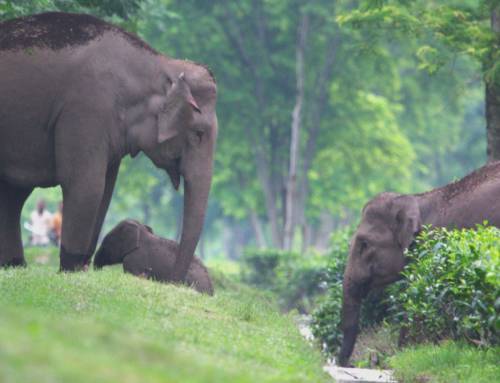Author: Abheeshta Rao
This is the second article from our two-part series called “Wildlife Friendly Production Landscapes”.
Across the Western Ghats, coffee agroforest area is slightly more than 25% of the land area that is formally protected. Besides the coffee varieties, these areas have high avian and mammalian diversity.
The history of coffee in India is as rich as its highly regarded taste. Having taken its roots in Chikmagalur over 350 years ago, coffee farms have become one of the most recognizable landscapes of the Western Ghats. Coffee farms provide livelihoods to thousands of people. The characteristic evergreen coffee shrubs interspersed with towering trees is more than just a visual treat. These agroforests are known to harbour a plethora of wildlife species. However, in the last 20 years, shade-grown coffee has given way to high-intensity, full-sun monoculture. Arabica and Robusta are the two coffee varieties that are most commonly grown in the hills of the Western Ghats. Interestingly, both these species require extremely specific growing conditions. So far, most of the existing scientific assessments on avian fauna richness have seldom distinguished between coffee species and have instead compared coffee against other crops, sacred groves, and native forests. Analyzing the ecological impacts of conversion between the coffee species is critical in understanding whether coffee can continue to serve as buffer habitat for wildlife.
A team of scientists from the Centre for Wildlife Studies, Princeton University and the Nelson Institute, surveyed 30 Arabica and 31 Robusta farms to analyze the abundance of endemic, forest-dependent and IUCN red-list species of birds. The scientists also surveyed 344 agroforest owners to explore policy levers that could be most powerful in securing a biodiversity-friendly future for these lands. This study was among the first to assess the avian diversity and abundance within the two types of coffee farms.
The study revealed that the overall species diversity of birds was higher in Arabica agroforests than the ones with Robusta. Despite the higher profit margins of the Arabica variety, there has been a shifting trend to grow the Robusta variant due to its resilience and the ability to resist diseases. The density of the birds, however, were found to be similar or slightly higher in Robusta farms than in Arabica farms. Existing farming practices could also be contributing to this outcome as only 19% of Robusta farmers had used pesticides as compared to 75% of the Arabica farmers.
The study also highlighted that managing the composition of shade tree species and landscape forest cover, is a major lever for improving the biodiversity of these agroforests. Evidence suggests that frugivore and omnivore abundance may still be high despite being far from protected areas. This indicates that coffee agroforests can produce substantial economic and biodiversity benefits as buffers. This study emphasizes the need for practical certification efforts which seek to quantify the relationship between yield, crop type, planting practice, and the biodiversity of birds. As more Arabica farms are being converted to Robusta, certification efforts should incentivize maintaining native canopy shade trees instead of high diversity of exotic tree species.
Original Research Article: Birds and beans: Comparing avian richness and endemism in arabica and robusta agroforests in India’s Western Ghats- Charlotte H. Chang, Krithi K. Karanth and Paul Robbins(Nature Scientific Reports, 2018)
You can find the original article here.





